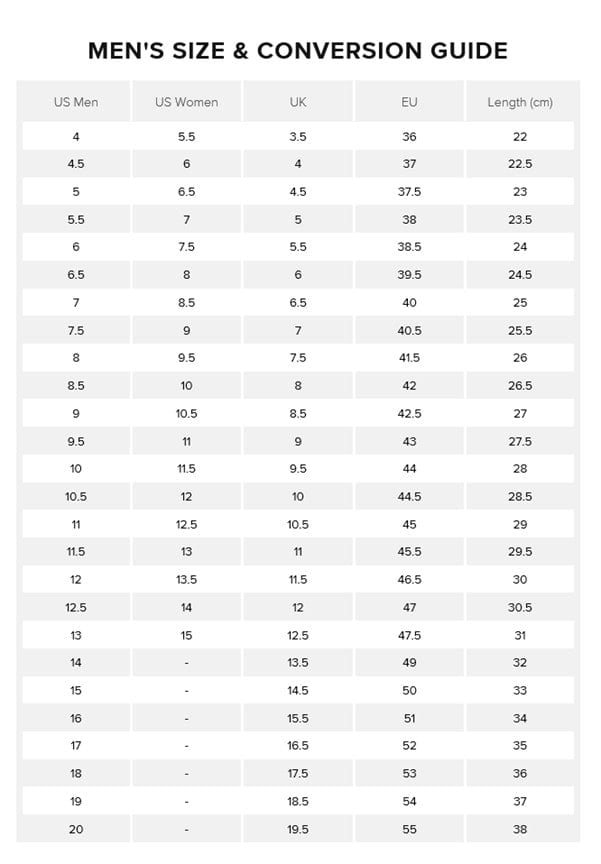The Ultimate Guide to Shoe Size Conversion for Your Little Ones
Hey there awesome parents! ? Are you in a pickle trying to find the perfect size shoes for your kiddos? Whether you’re eyeing that adorable pair of sneakers from overseas or sorting through hand-me-downs from a cousin two continents away, figuring out shoe size conversion can make your head spin faster than a toddler after an ice cream sundae! But don’t you fret; we’re here to make this tangled task a breeze. ?
Buckle Up: Why Knowing Shoe Size Conversion Matters
First things first, let’s chat about why getting the size right is so crucial. Ill-fitting shoes aren’t just uncomfortable; they can actually hamper your child’s foot development. Too tight, and we’re talking about blisters and squished toes. Too loose, and you’ll see them tripping more often than they already do! Let’s keep those tiny tootsies happy and healthy with a perfect fit, shall we? ?
Understanding the Basics of Shoe Size Conversion
Before we dive into the nitty-gritty of shoe size conversion, let’s understand the basics. Shoe sizes can be as varied as the countries they come from. Generally, you’ll encounter the US, UK, European (EU), and sometimes Japanese (JP) sizes. Each sizing system is unique, and there’s no universal standard to keep things simple (oh, how we wish!).
US, UK, EU, JP: Navigating the Alphabet Soup of Shoe Sizes
Let’s break it down so those acronyms don’t look like a bowl of alphabet soup:
- US sizes are largely utilized in North America and some other countries. Kids’ sizes typically start at 1 and can be confused with adult sizes—differentiated often by adding a ‘K’ for kids.
- UK sizes can be a tad tricky since they’re labeled similarly to US sizes but use a different scale. UK kids’ sizes might have a ‘C’ for child.
- EU sizes cover a vast array of countries and are generally measured in centimeters, which can, thankfully, make for a more universal approach.
- JP sizes are also measured in centimeters but tend to run smaller, so it’s important not to mix up EU and JP sizes.
Phew! That might seem like a lot right now, but stick with us! ?
Step-by-Step Conversion: TAG TEAM, Back Again!
Ready to tag team and become the dynamic shoe-size-converting duo? Here are the steps:
- Get an accurate foot measurement. You can use a Brannock device (that metal thing at the shoe store), or simply grab a piece of paper, a pencil, and a ruler.
- Compare against a reliable size chart (we’ll provide one further down!)
- Remember to account for growing room – typically about half an inch (or a thumb’s width).
- When in doubt, go for the larger size. Kids grow faster than bunnies hop!
- Consult international conversion charts for the specific type of shoe and brand, as there can be variances.
Now that we’ve got our groundwork laid out, let’s hippity-hop into the details of converting those elusive shoe sizes! ?
In the following sections, we’ll provide you with comprehensive shoe size charts, pro tips for each sizing system, and pointers on how to measure your child’s foot like a seasoned pro. You’ll also learn how to navigate size variations for different brands and different types of shoes, because we all know there’s a world of difference between ballet flats and soccer cleats!
With our guide by your side, you’ll zippity-zap through shoe shopping, ensuring your little one’s feet are snug as a bug in a rug. So, let’s lace up and take the next step on our shoe size conversion adventure! ?
Stay tuned as we ensure that the next time you come across a chart full of numbers more complex than your kiddo’s math homework, you’ll handle it with flair and confidence. Ready? Let’s stride forward! ?

5 Essential Things Parents Should Know for Shoe Size Conversion
Before we delve into the charts and specifics, here are five golden nuggets of wisdom to help any parent navigate the shoe size conversion process:
- Understanding Shoe Size Increments: It’s vital to know how shoe sizes increment so you can accurately size up. In US sizes, one full size is approximately 1/3 inch. The UK sizes go up by 1/3 inch as well, while the EU uses a 6.6 millimeters increment, which is roughly a quarter inch.
- The Importance of Width: It’s not just the length of the foot that matters but the width too. Some brands offer different width fittings, so be aware of whether your child has narrow, standard, or wide feet to ensure the best fit.
- Brand Sizing Variances: Remember that not all brands size their shoes the same way. A size 1 in one brand might fit differently compared to a size 1 in another brand. Always check brand-specific sizing charts if available.
- Room to Grow: Kids’ feet grow quickly, and they need extra space in their shoes for natural growth and movement. Make sure to leave about a half-inch room for growth when selecting a size, but no more, as excess space can lead to tripping.
- Regular Measurement Updates: Measure your child’s feet every few months, as their shoe size can change quite rapidly. Even a few months can make a difference, so keep those measurements up to date!
Building Your Shoe Size Conversion Toolkit
Now it’s time to assemble your very own shoe size conversion toolkit! Here’s what to include:
- A printable children’s shoe size chart, which you can find online. We’ll give you one later in this guide.
- Measuring tape or ruler for measuring feet at home.
- A small notebook or an app to keep track of your child’s foot measurements and size history.
- Access to brand-specific size guides for those special shoes you’re eyeing.
- A list of your child’s currently fitting shoes, which can be helpful for reference when shopping for new ones.
Armed with these tools, you’ll be set to conquer any shoe size challenge that comes your way!
Measuring Munchkin Feet: A Step-by-Step Guide
Accurate foot measurement is the cornerstone of finding the right shoe size. Here’s how you can measure your child’s feet from the comfort of your home:
- Have your child stand on a piece of paper wearing socks they’d typically wear with shoes.
- Trace the outline of both feet carefully. It’s normal for one foot to be slightly larger than the other, so you’ll want to use the larger foot as the base measurement.
- Measure the length from the heel to the longest toe.
- Check the width by measuring the widest part of the foot.
- Use these measurements with the shoe size chart for the desired brand or general conversion.
And voila! You’ll have the perfect starting point to select a shoe size that’ll hug your little one’s feet just right.
Finding the Perfect Fit: Shoe Size Conversion Chart
Now, let’s get to the heart of the matter—converting shoe sizes. Below you’ll find a handy-dandy shoe size conversion chart that’ll help you translate sizes from one system to another.
Note: This chart is a general guide. Always refer to specific brand guidelines for the most accurate sizing.
Children’s Shoe Size Conversion Chart
| US Size | UK Size | EU Size | Foot length (inches) | Foot length (cm) |
|---|---|---|---|---|
| 5K | 4C | 20-21 | 4.75″ | 12.1 |
This chart gives you a general overview, but remember, when shopping internationally or online, it’s always best to check the manufacturer’s size guide.
Embrace these conversion tips and tricks, and you’ll be a shoe size sleuth in no time. Keep those feet happy and those shoes fitting like a dream as your child embarks on every new adventure. After all, every little step counts towards big strides in the future!
For more great articles please see here. For more information see here
Disclaimer
The articles available via our website provide general information only and we strongly urge readers to exercise caution and conduct their own thorough research and fact-checking. The information presented should not be taken as absolute truth, and, to the maximum extent permitted by law, we will not be held liable for any inaccuracies or errors in the content. It is essential for individuals to independently verify and validate the information before making any decisions or taking any actions based on the articles.




